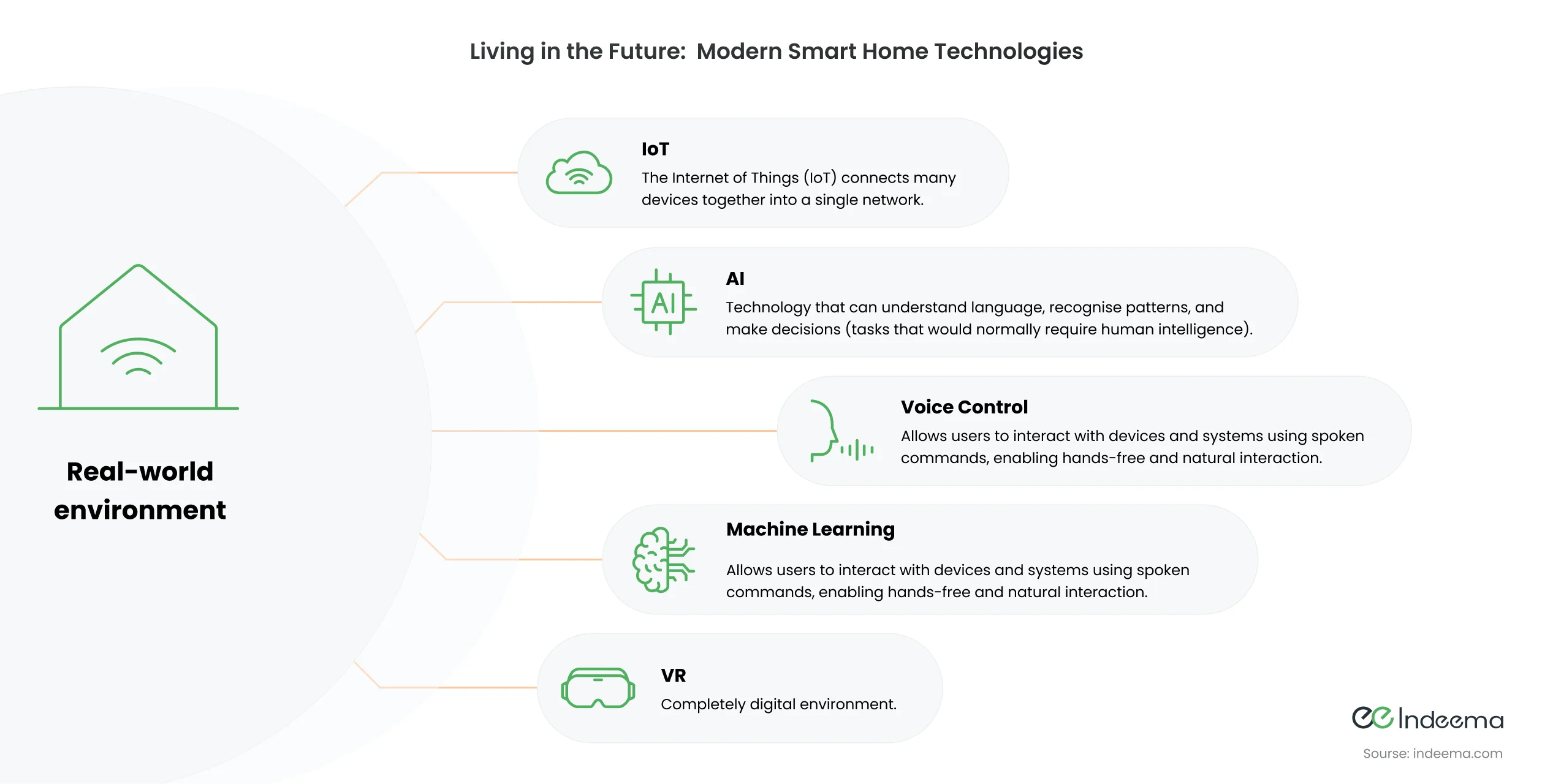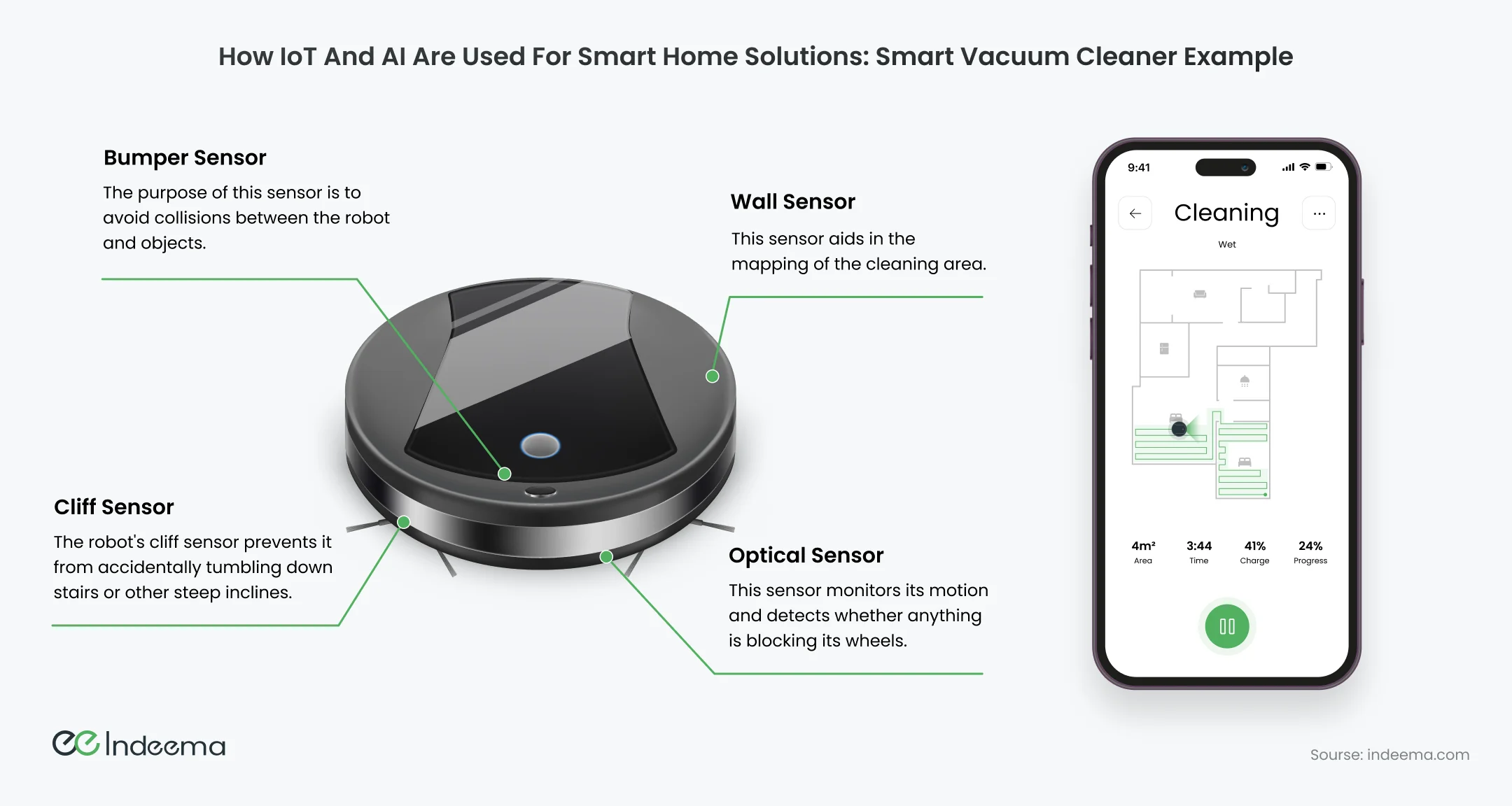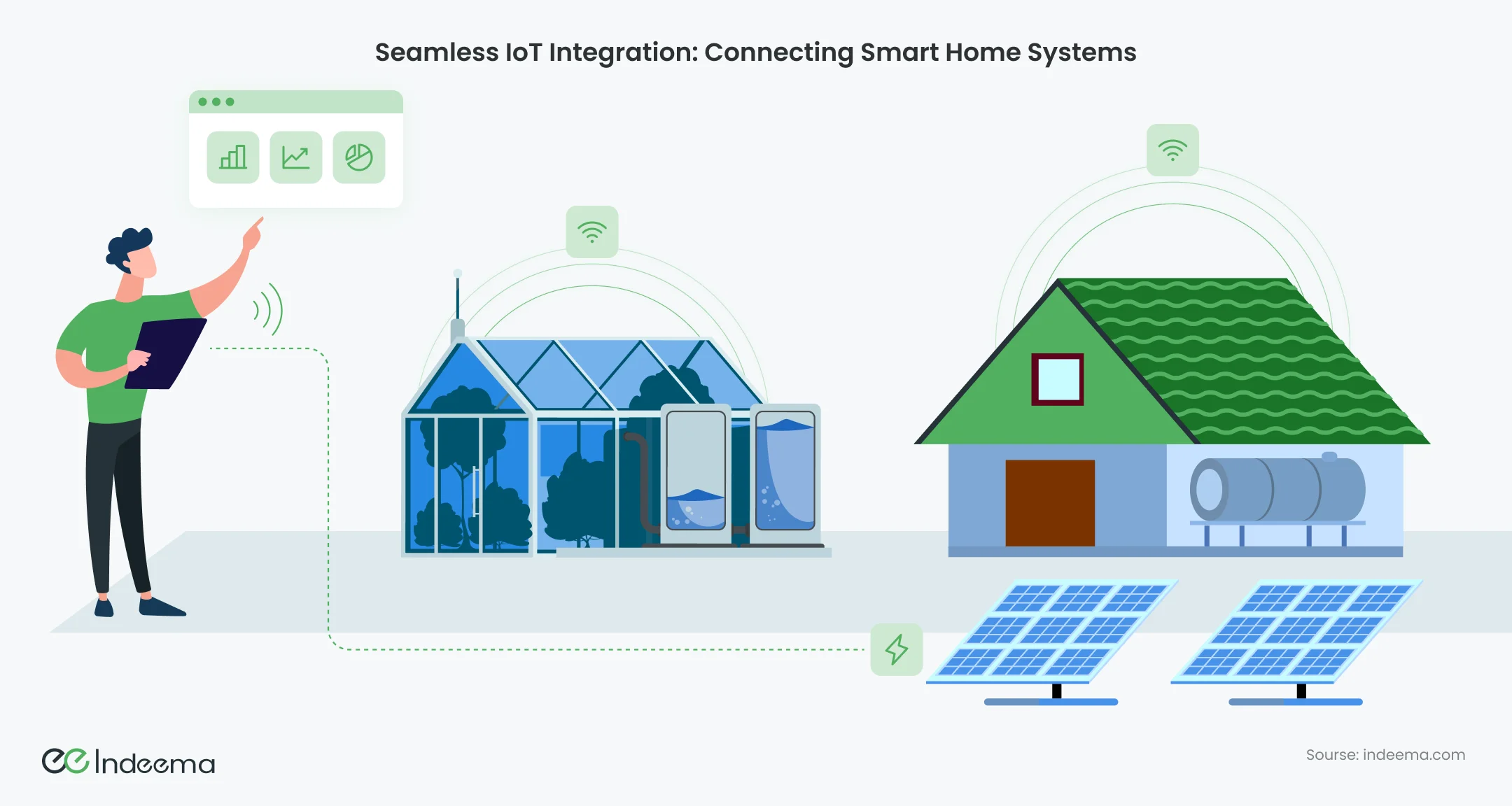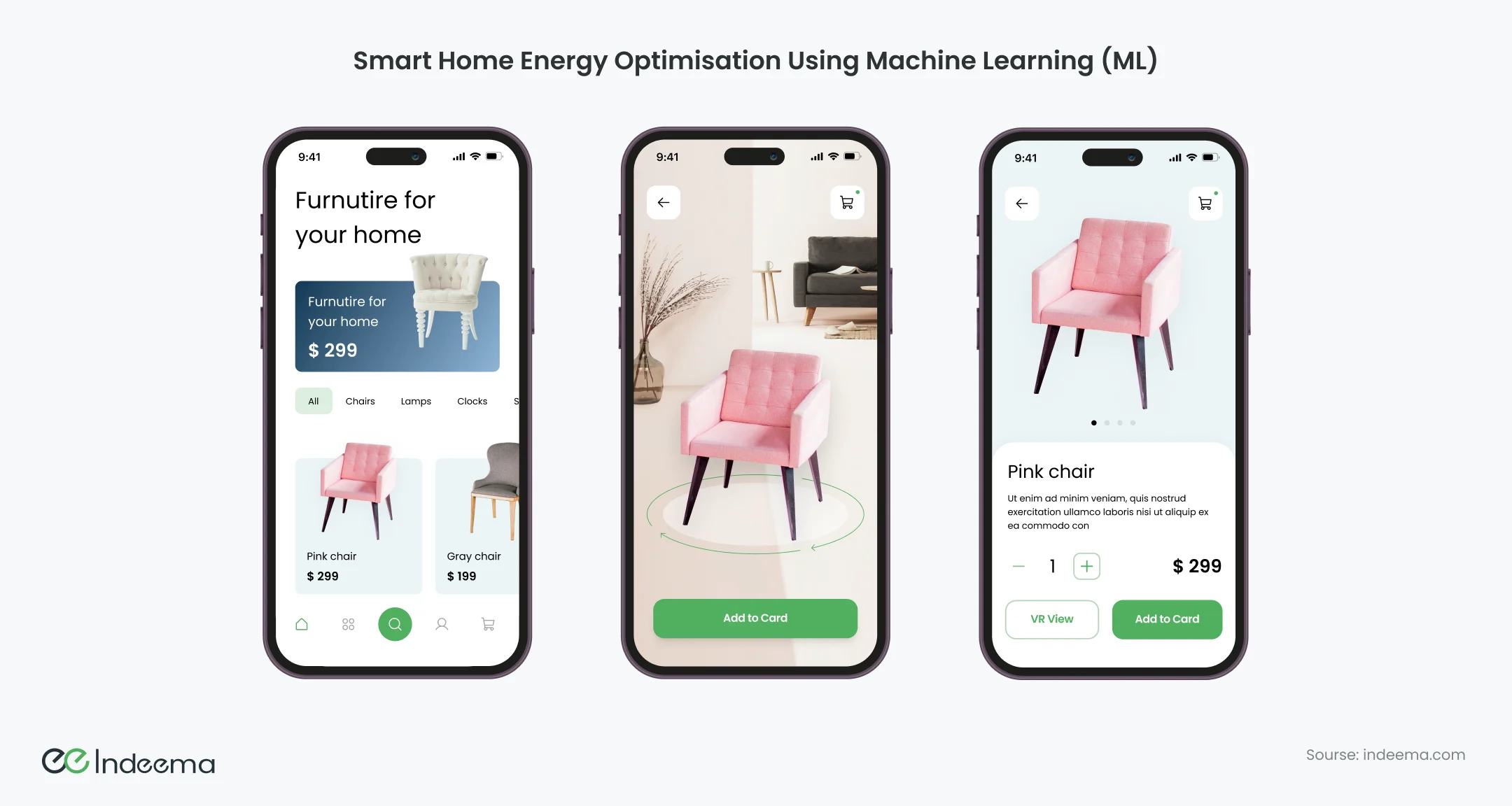Introduction
The advancements in modern smart home technologies are truly impressive.
Not too long ago, the capabilities they offered appeared to be unbelievable. However, home automation is still in its early stages. This is evident because standards are still in the early stages of development and new, unforeseen solutions are emerging in the market. We can all easily imagine a smart home in the future when every element of daily life is automated. Today, some of the smart home technologies that were once considered science fiction have already become a part of our everyday reality.
 Curiously enough, recent data has shown a noticeable trend among consumers when it comes to their expectations for upcoming smart home technology. Their top priority is the smooth integration of older smart home appliances into their current networks. Incorporating older-generation appliances into a smart home network can be done effectively by using budget-friendly solutions such as smart plugs, which are widely available for less than $30. It might be difficult for the consumer to satisfy other wishlist items, though.
Curiously enough, recent data has shown a noticeable trend among consumers when it comes to their expectations for upcoming smart home technology. Their top priority is the smooth integration of older smart home appliances into their current networks. Incorporating older-generation appliances into a smart home network can be done effectively by using budget-friendly solutions such as smart plugs, which are widely available for less than $30. It might be difficult for the consumer to satisfy other wishlist items, though.
We can discuss the future of smart living and the insights of smart home developers, but it's important to always take consumer feedback into consideration. The field of smart buildings is constantly evolving. However, let's try to imagine the possibilities and see what the smart home technology of the future might entail.
1. Smart Homes Technology of the Future: A Look at What's Coming Soon
Smart technology is supposed to make our lives easier by relieving us of mundane, repetitive tasks so that we can focus on what's really important to us. IoT, AI, and VR are all separate technologies, but when combined, they create this possibility.

Let's take the smart vacuum cleaner as an example because it's a device that most of us already use regularly. How does it autonomously and effectively clean a room? A robotic vacuum cleaner has internet of things (IoT) sensors that scan the area around it in addition to its cleaning mechanisms. It takes the information it gathers and uses it to simulate your home in virtual reality. You can modify this representation, establish limits, and make other modifications using software programs. Finally, the robot uses AI algorithms to figure out the most effective strategies for cleaning various surfaces and the most efficient paths to take while doing so.
Indeed, future smart homes will not only revolutionise the cleaning routine. For instance, we always relish a satisfying meal, but unfortunately, we often lack the chance or time to prepare one ourselves.
We'll soon be able to use a robot chef to take care of everything. Yes, for the time being, these are pricey experimental models, but that is anticipated to change quickly.
In comparison to a smart hoover cleaner, this type of robot should incorporate improved IoT sensors, develop a more intricate virtual reality, and employ more advanced AI algorithms. The combination of these three components is what alters the rules of the game and produces extraordinary outcomes.
In our previous series of articles, we have already explored smart home app development. In this article, we will delve deeper into the potential impact of IoT, AI, and VR on the future of smart homes.
2. Smart Living, Smart Problems: Challenges of Home Automation
As we delve deeper into the world of home automation, it becomes clear that "smart living" comes with its own set of challenges and complexities.
- Many users find that adjusting to a smart home lifestyle takes some time to get used to. For those who are not very tech-savvy, it can be quite overwhelming to grasp the process of setting up and managing different devices, creating automation routines, and resolving any problems that may arise.
- Although the prices of smart devices have become more affordable over time, creating a complete smart home ecosystem can still be quite expensive.
- As homes become increasingly connected, they also become potential targets for cyberattacks. Ensuring strong cybersecurity measures is a top priority in the realm of home automation.
Despite these challenges, the appeal of smart living continues to grow. Manufacturers and developers are actively addressing smart home accessibility and security so that consumers can fully enjoy the benefits of home automation.
3. Defining IoT in the Context of Smart Homes
As we've discussed in earlier articles, the core components of smart homes are Internet of Things devices.
They gather crucial information regarding the condition of rooms and have a direct impact on the environment. Many users engage with the home ecosystem by using IoT connected devices, such as control panels or smart speakers.
The Internet of Things (IoT) is facilitating the integration of a growing number of devices into a cohesive environment. For instance, your smart home can now seamlessly connect with various smart home products such as smartwatches, fitness bands, headphones, and, naturally, smartphones.
 In addition, the home system has the capability to communicate with various other systems. For example, it can connect with gardening systems to automate tasks like lawn watering or orchard care.
In addition, the home system has the capability to communicate with various other systems. For example, it can connect with gardening systems to automate tasks like lawn watering or orchard care.
Furthermore, a smart home can also receive data from commercial resource monitoring tools, such as those that track water and power usage.
3.1 The Potential of IoT: Harmonizing Smart Homes of Tomorrow
The smart home in future will be able to interact with other IoT systems and devices, resulting in improved convenience, user awareness, and overall user experience. In order to accomplish this, it is necessary to address the issue of data sharing. In our series of articles focused on IoT technology, we have provided explanations on the principles and standards that govern the interaction between IoT devices. The standards can vary greatly depending on the specific tasks and requirements of different industries. Furthermore, devices are manufactured by various vendors and manufacturers. This brings up the issue of device compatibility and the smooth transmission of data between them.
However, this problem will be resolved soon. A crucial step towards finding a solution is the implementation of global standards that will be backed by the majority of manufacturers.
It is important to mention that home IoT devices also have other tasks, such as performing preliminary data processing. Smart cameras, for instance, have the capability to encode video with an efficiency of up to 90%. This results in more effective network transmission and significant savings in storage space. This specific task requires IoT devices to have higher computational performance. However, it also opens up possibilities for using more complex algorithms and exploring new opportunities such as virtual reality (VR) and artificial intelligence (AI).
4. Virtual Reality (VR) in Smart Homes: Creating Immersive Environments
In the future, the Internet of Things will be the backbone of the smart home, but the question of where exactly to put devices within the home has arisen. Virtual reality is another piece of technology that helps us out here.
During the planning stages of building or integrating smart home devices, virtual reality is a valuable instrument. Virtually experience the benefits of smart home technology as you plan and visualize the optimal configuration of your future dwelling. In reality, this is the only way to truly envision the potential of smart home technologies.
Developing a smart home app that incorporates VR technology to enhance the configuration of living spaces is an exciting endeavour. Some important factors to consider are a design that is easy for users to navigate, compatibility with virtual reality hardware (some of the most popular VR hardware are Oculus Rift, HTC Vive), creating realistic 3D models, intuitive interactions in virtual reality, and integrating real-time data from IoT devices. Essential features include customization options, AI-driven recommendations, and cross-platform accessibility.
 The effects of combining Internet of Things gadgets with virtual reality are amazing. IKEA, a well-known brand for affordable furniture, has been leading the way in smart home market by utilizing platforms such as Google's ARCore to create its own distinctive AR app. This technology allows users to virtually place IKEA catalog items in their living spaces, giving them a realistic preview of how they will look.
The effects of combining Internet of Things gadgets with virtual reality are amazing. IKEA, a well-known brand for affordable furniture, has been leading the way in smart home market by utilizing platforms such as Google's ARCore to create its own distinctive AR app. This technology allows users to virtually place IKEA catalog items in their living spaces, giving them a realistic preview of how they will look.
Are we already ready to be blown away by this mind-blowing feature?
4.1 How VR Enhances IoT in the Face of Challenges
However, virtual reality (VR) presents developers with a set of strict conditions that can pose complex challenges.
Computing Power. The creation of high-quality VR imagery requires a substantial amount of computing power for tasks such as encoding/decoding and rendering. Streaming VR video requires a significant amount of data due to the immersive nature of the content, which encompasses a complete 360-degree view. Hence, the extensive size of VR content necessitates higher network bandwidth requirements.
System Design. A poor network connection can cause sudden interruptions in data streaming. Furthermore, stationary cameras or those with limited mobility may not provide complete coverage of all areas within a space. The design of a system plays a crucial role in ensuring a smooth and uninterrupted user experience.
User Action Prediction. The system's load can be reduced and user smart home experience can be enhanced by predicting user actions. The system should be able to adjust and respond to the user's movements and interactions with the content. Nevertheless, the system should not fail even when faced with unpredictable user actions.
Despite the challenges, the benefits of combining VR with IoT are substantial. In the coming years, there will be a growing presence of Internet of Things devices that come equipped with embedded virtual reality capabilities.
5. Innovative AI and Smart Homes of the Future
What truly sets the latest smart home devices apart is their integration of Artificial Intelligence (AI). These innovations are poised to reshape the way we envision and interact with our homes, creating opportunities that savvy business owners can harness for growth and success.
AI-powered smart devices for homes are becoming increasingly intelligent. The integration of AI into these devices enhances their efficiency and enables them to dynamically adapt to user behaviour. AI-driven virtual assistants, for instance, can now understand and respond to natural language, making interactions with smart devices feel more intuitive and seamless than ever before.
The fusion of AI and smart homes of future will revolutionize how we interact with our living spaces. The next step involves advancing to a higher level, which entails exploring the interaction between buildings and the integration of smart homes within smart cities.
With the increasing demand for smarter and more intuitive solutions, businesses in the smart home industry are presented with the challenge and opportunity to improve their current products and services by incorporating AI-driven capabilities.
Here are some compelling reasons to explore AI integration in smart home solutions:
Improved Security: AI-powered security cameras, such as the Arlo Pro 4, use advanced algorithms to detect suspicious activities, send alerts, and even identify specific objects or people, enhancing home security.
Predictive Maintenance: AI can predict equipment failures, as seen in Whirlpool's appliances with predictive maintenance capabilities. They analyze usage data and notify users before a potential breakdown, reducing downtime and repair costs.
Voice and Gesture Control: Voice assistants like Google Assistant and gesture recognition systems, such as the LG ThinQ refrigerator, enable intuitive control of smart devices, making them more user-friendly.
Data Insights: AI-driven analytics platforms, like those offered by Samsung's SmartThings, provide homeowners with insights into energy usage, suggesting ways to optimize consumption and reduce costs.
Adaptability: Devices like the Ecobee SmartThermostat adapt to user preferences over time, learning individual comfort levels and adjusting temperature accordingly.
Convenience: AI automates routine tasks, like locking doors, adjusting lighting, or brewing coffee. For example, the Roomba vacuum cleaner is a small home robot that autonomously navigates and cleans homes, freeing up time for other activities.
Future-Proofing: AI integration future-proofs smart homes, ensuring compatibility with emerging technologies and updates. For instance, Apple's HomeKit platform consistently evolves to support new devices and features.
Cost Savings: AI optimizes energy consumption and reduces maintenance costs. For instance, the Curb energy monitoring system tracks electricity usage, identifying opportunities for cost-saving adjustments.
The primary hurdle in advancing AI technology for the smart homes of the future lies in data collection. The greater the volume of data, the more effective AI-based systems become. However, a challenge arises as users are often hesitant to share their information, and companies tend to gather data implicitly. This issue can be addressed through transparency and trust-building measures. To achieve this, users need a comprehensive understanding of the data being transmitted, its purpose, and the advantages they can reap in return. When the benefits outweigh the potential risks of AI and smart homes of future, users are more likely to consent to data sharing.
5.1 Understanding Machine Learning in Home Automation
The smart home of the future should not only possess intelligence but also provide practical assistance to individuals. We have moved beyond being content with just using a smartphone app to control the smart thermostat or smart security systems. The advent of modern automation has the potential to revolutionise the convenience of smart home automation. Machine learning algorithms are used to assist in this task.
The machine learning algorithm adapts to the user's preferences and schedule as it collects and processes more data. Smart thermostats and automatic lighting are excellent examples of how machine learning has proven to be highly effective in connected homes. They effectively adapt to people's daily behavioral cycles, helping to save time and money, and even enhance energy efficiency. The objective of incorporating machine learning into smart homes is to enhance their usefulness and responsiveness to users' needs and processes. This is achieved by predicting these needs instead of solely relying on direct commands or manually programmed procedures.
 In conclusion, Machine Learning isn't just a tool or a concept; it's the beacon guiding us toward a future where the extraordinary becomes ordinary. As we continue to harness its potential, we're not merely staying ahead in the game; we're rewriting the rules altogether building smart homes technology of the future.
In conclusion, Machine Learning isn't just a tool or a concept; it's the beacon guiding us toward a future where the extraordinary becomes ordinary. As we continue to harness its potential, we're not merely staying ahead in the game; we're rewriting the rules altogether building smart homes technology of the future.
5.2 Voice Control: The Rise of Natural and Hands-Free Interaction
When it comes to controlling a smart home ecosystem, users require a more intuitive and natural interaction. In this context, our language is the simplest and most understandable tool available. Natural language processing (NLP) is a field that falls under the umbrella of artificial intelligence, computer science, and linguistics. Its primary goal is to enable computers to understand and interpret human communication, including speech and text. Voice control has become a common feature for most people and is expected to further evolve in smart homes in the future.
 In recent years, the popularity of voice-activated devices worldwide has surged due to advancements in speech recognition technology. Most people are familiar with virtual assistants such as Amazon's Alexa, Google Assistant, and Apple's Siri. Nevertheless, solutions offered by Chinese vendors like Baidu, Alibaba, and Xiaomi are also experiencing a boom in popularity. It is not surprising that they offer a straightforward and user-friendly interface for managing smart homes, cars, and daily schedules.
In recent years, the popularity of voice-activated devices worldwide has surged due to advancements in speech recognition technology. Most people are familiar with virtual assistants such as Amazon's Alexa, Google Assistant, and Apple's Siri. Nevertheless, solutions offered by Chinese vendors like Baidu, Alibaba, and Xiaomi are also experiencing a boom in popularity. It is not surprising that they offer a straightforward and user-friendly interface for managing smart homes, cars, and daily schedules.
Initially, voice assistants were integrated into smart speakers and smartphones. However, the capability of voice assistants has expanded to include a wide range of devices such as smart TVs, earbuds, and smart cameras. This list of devices offering voice assistant capability continues to grow. The reason for this understanding is that voice control offers users a natural and intuitive means of interacting with technology in homes of the future.
Voice assistants do have some limitations, though, and those will need to be fixed soon. Since everyone speaks differently, with different accents, and using varied speech patterns, this primarily concerns accurate and reliable voice recognition. Future helpers will only need a few words to comprehend us.
6. The Next 10 Years: Predicting the Smart Home Future Market's Trajectory
If we want to get a glimpse behind the curtain, we could inquire with AI about what we can anticipate in the future of smart homes. However, we would like to share our thoughts based on our expertise.
So here are our main foresights:
- Increased Accessibility: As production costs decrease, smart home technology will become more affordable and accessible to a larger audience.
- Enhanced Interoperability: The industry is already making efforts to standardise and improve compatibility in order to minimise the issues that arise when using devices from different manufacturers.
- Integration with Health and Wellness: Smart homes will prioritise health applications by monitoring vital signs, sleep patterns, and providing health-related insights. This market has a huge potential.
- Sustainability Initiatives: We will adopt eco-friendly practises and design products that can be easily recycled to reduce electronic waste. That's what we want to believe.
In a nutshell, evolution will be the only constant, and the key to fully unlocking the potential of smart living in the future will be adaptability.
Conclusion
We are living in a fascinating era marked by gradual yet revolutionary changes in our daily lives. The future smart home will take care of many of our daily tasks, allowing us to have more time for creativity, family, or our favourite hobbies. These homes will rest upon three foundational pillars: IoT, AI, and VR. By integrating these technologies into smart home future solutions, you not only gain a competitive edge in the market but also contribute to shaping the future. This is the path we are meant to follow, and it represents the future of smart homes.


